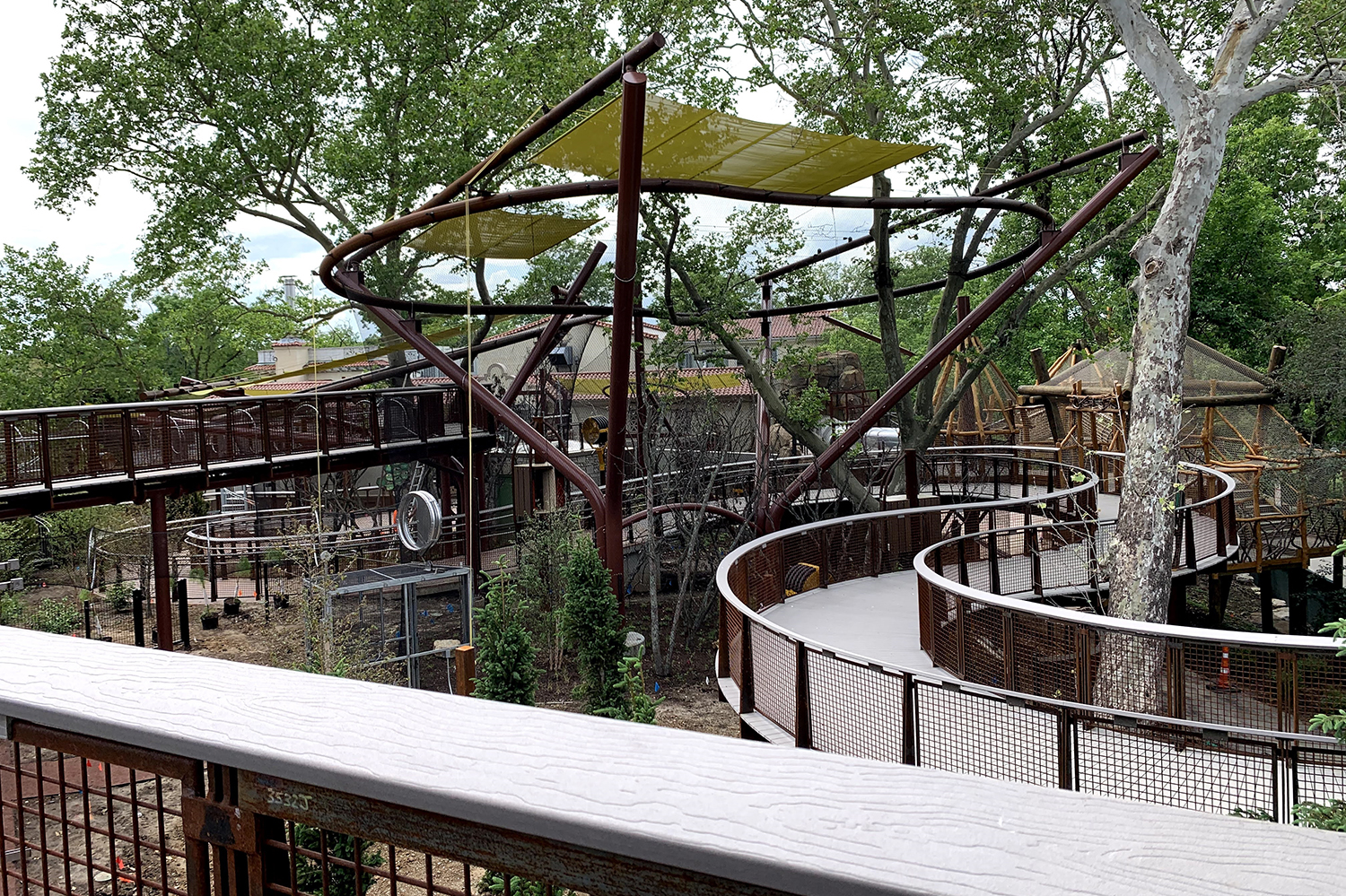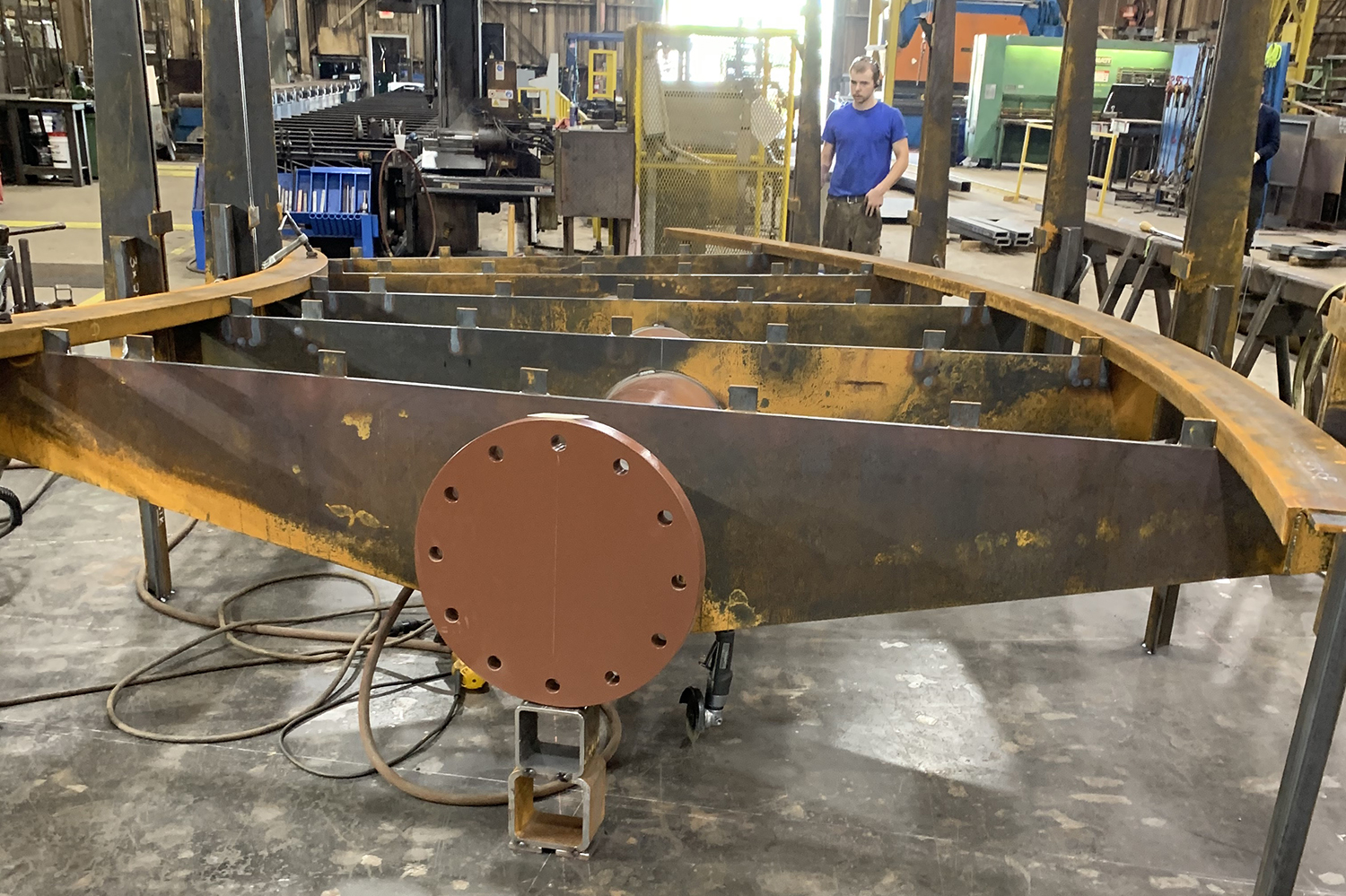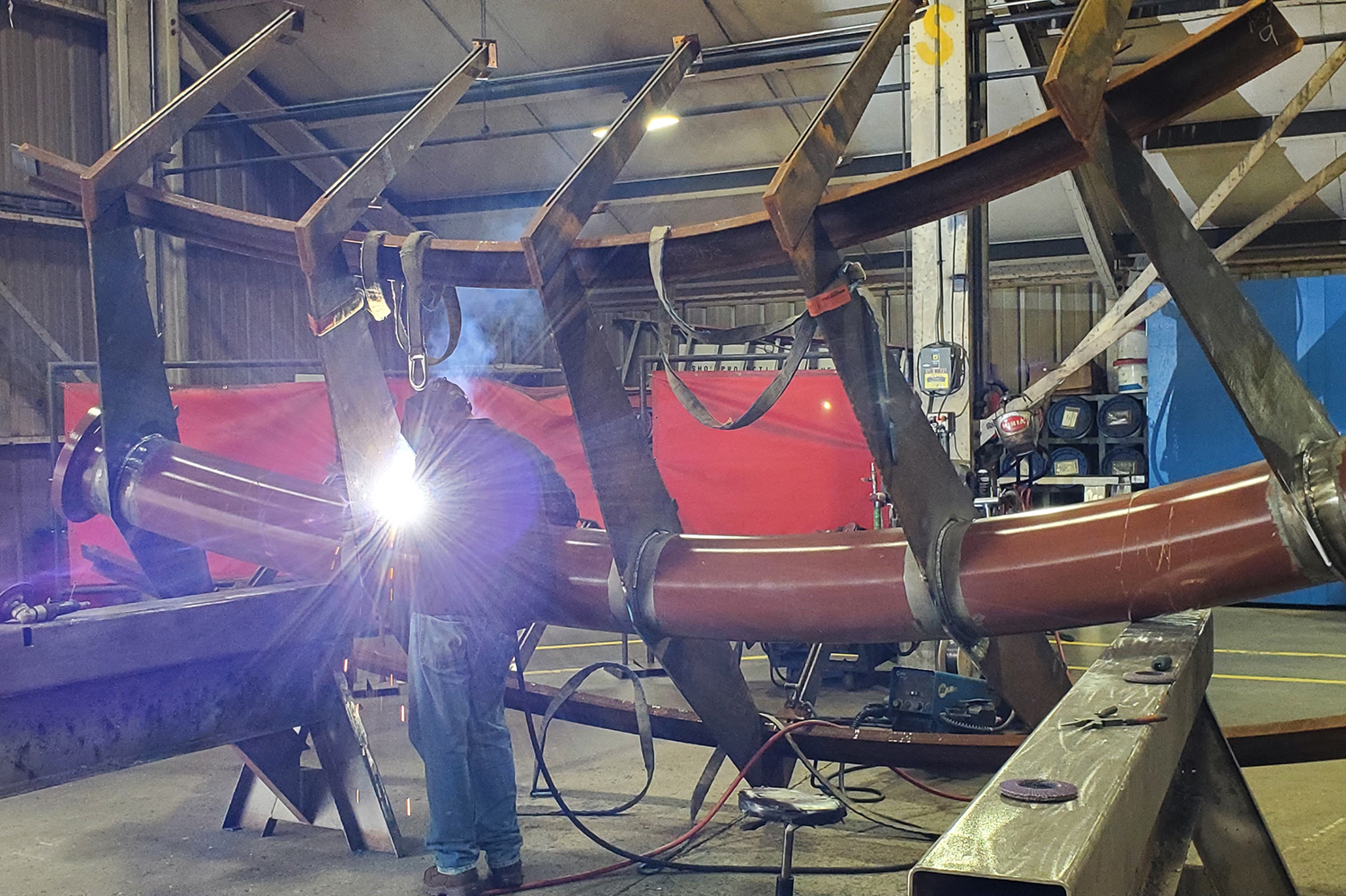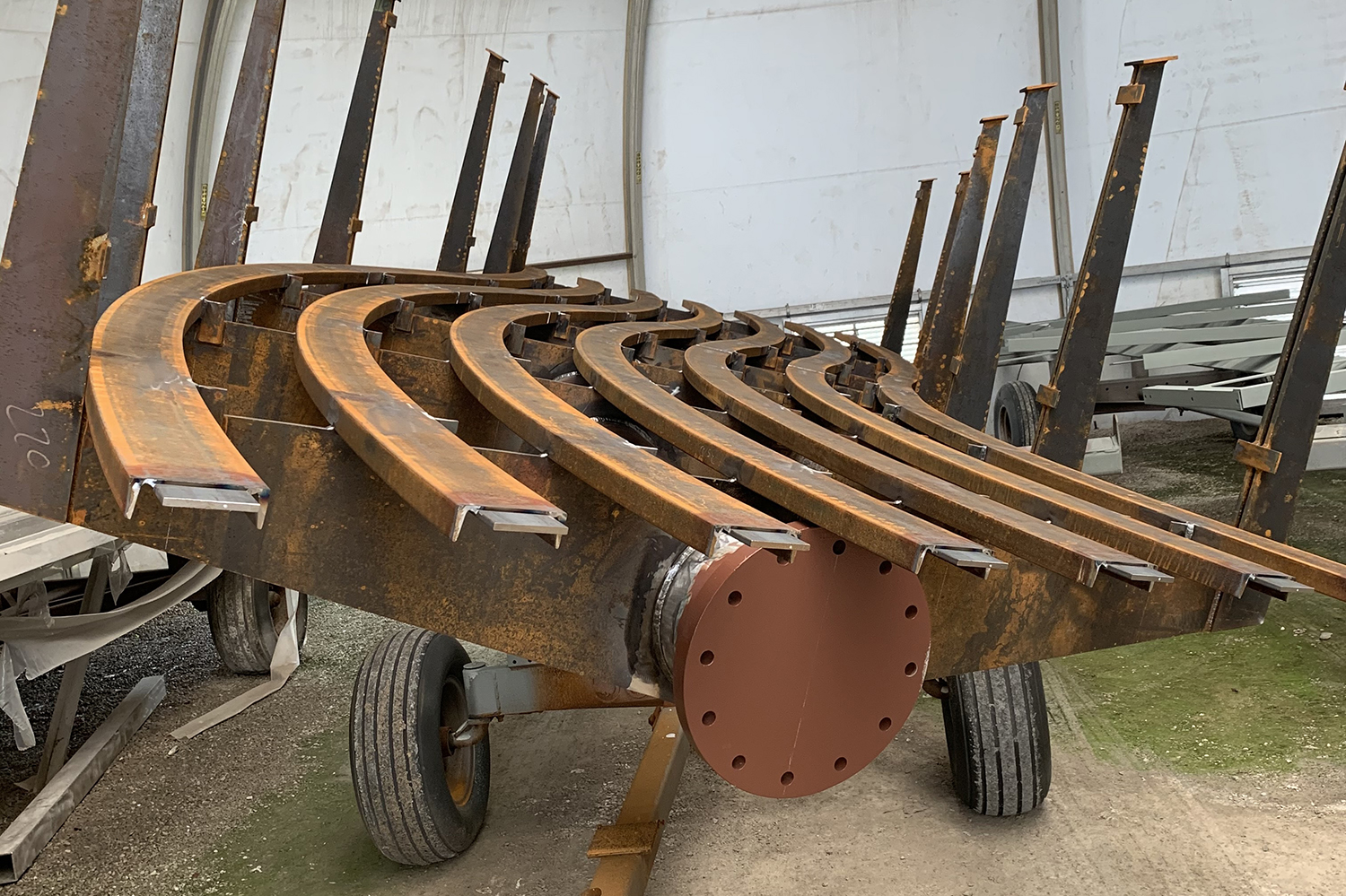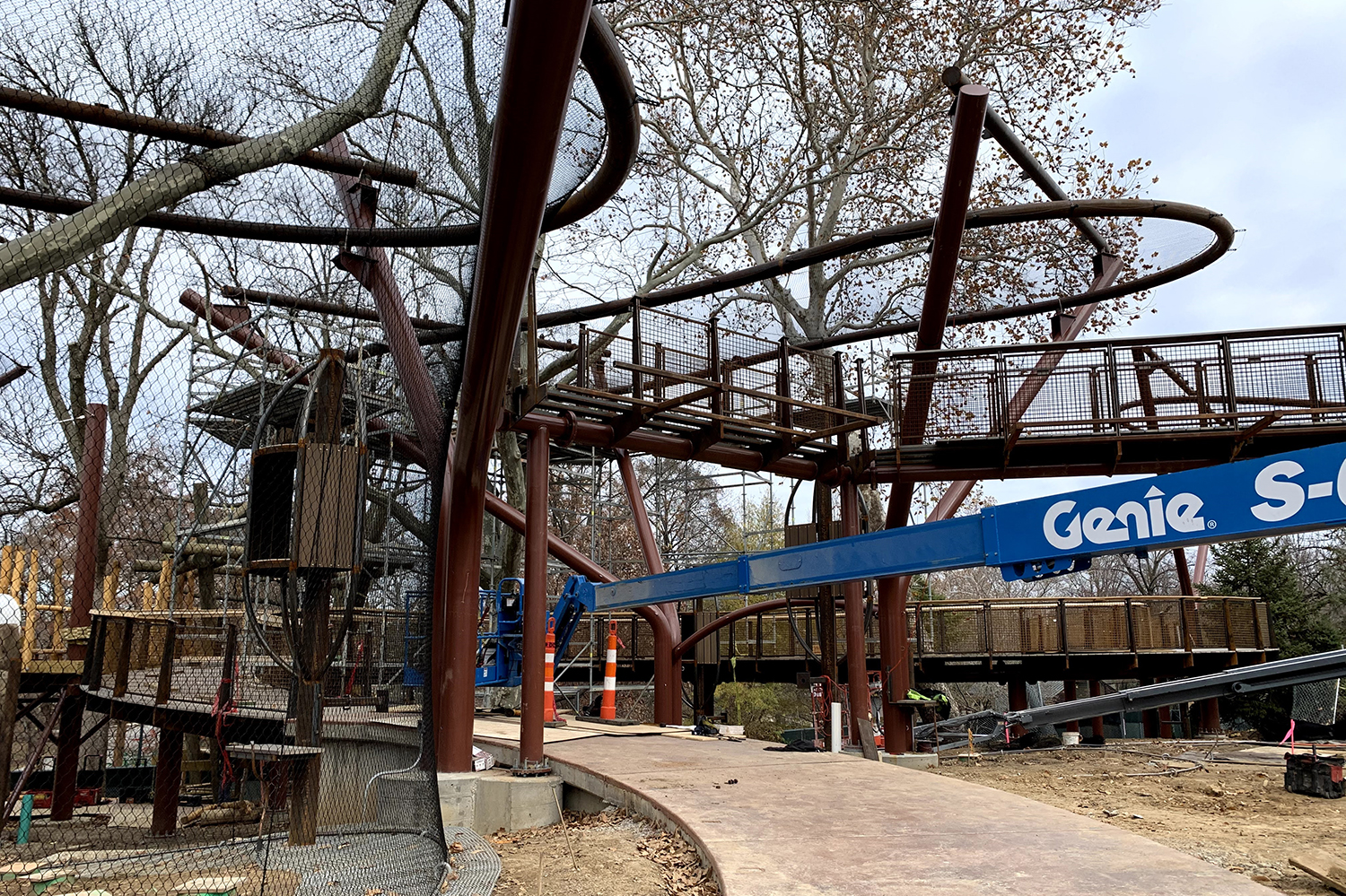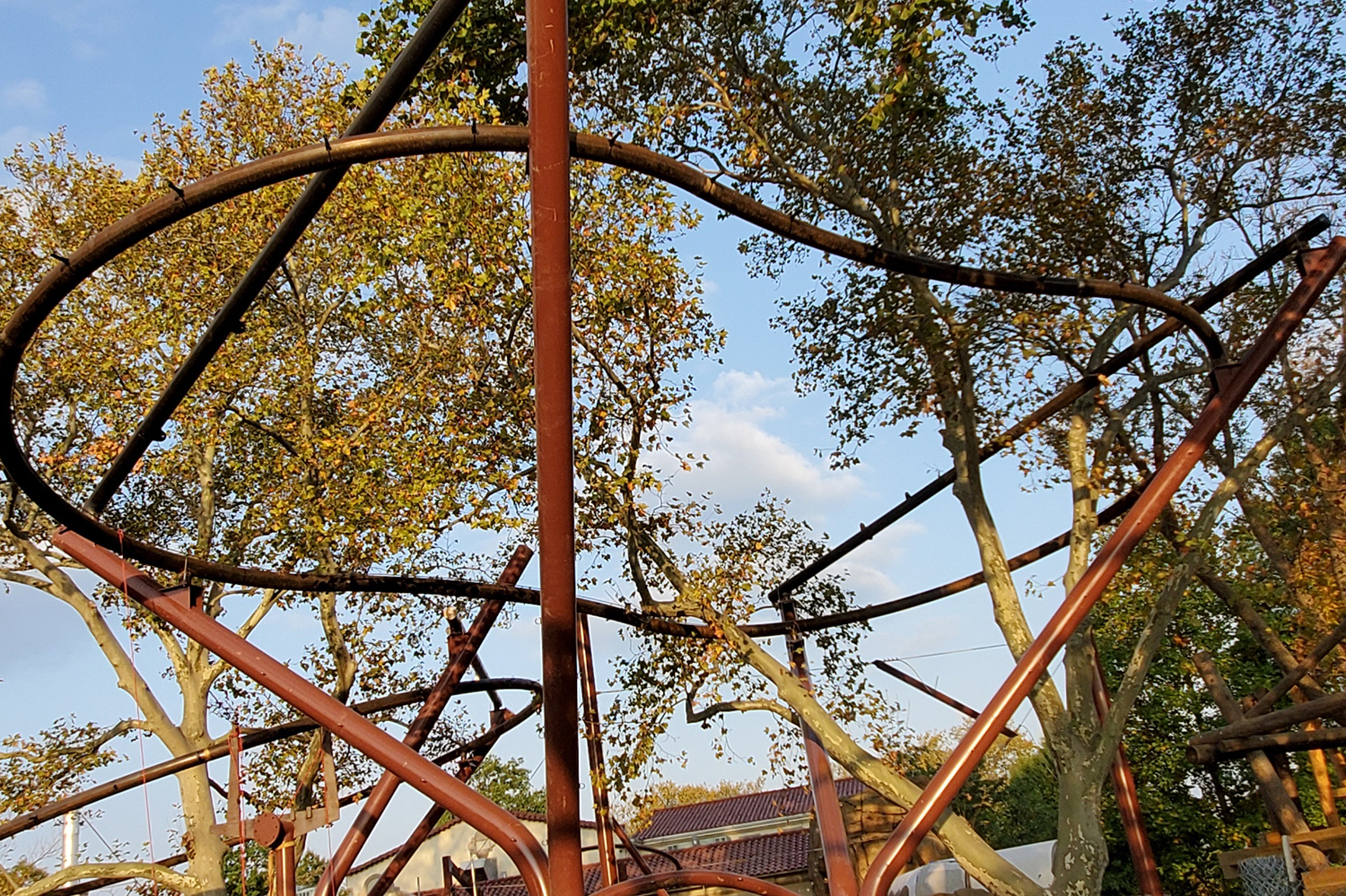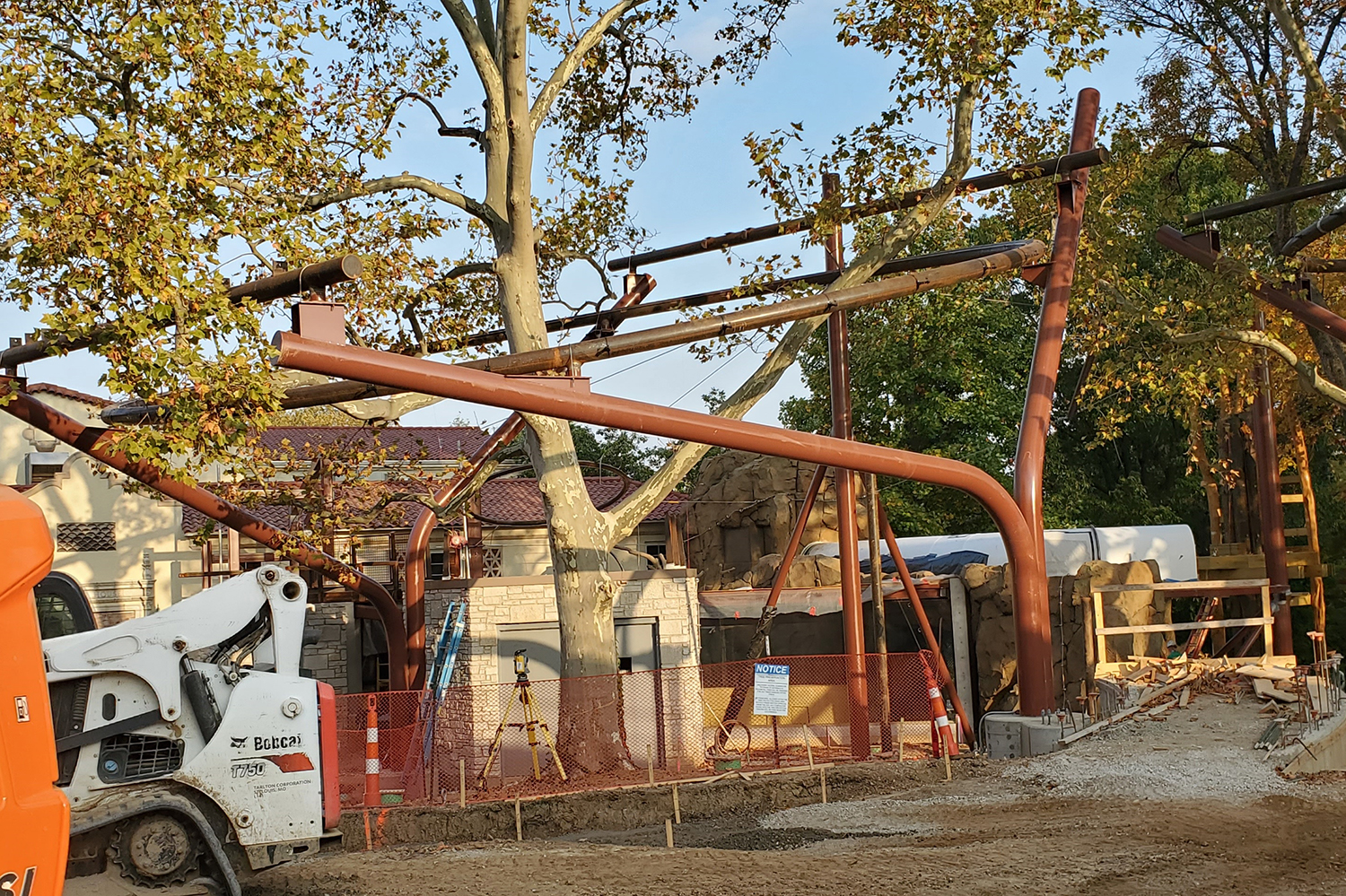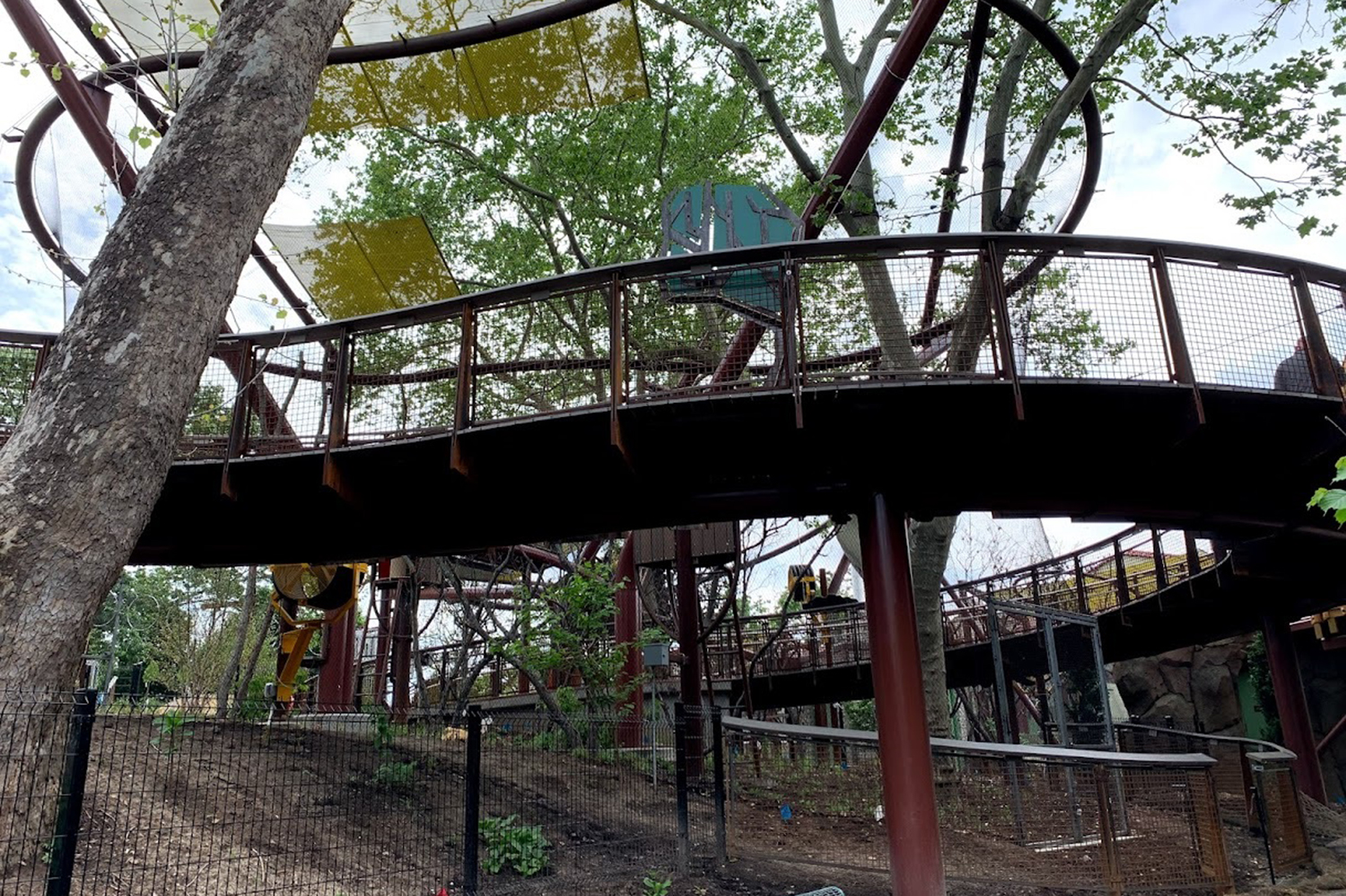AISC
Michael and Quirsis Riney Primate Canopy Trails
Merit Award - Sculpture/Art Installation/Non-Building Structure
The project team behind the Michael and Quirsis Riney Primate Canopy Trails weren't monkeying around when it came to seamlessly interweaving steel paths and climbing structures with live trees and other natural elements to give visitors a treetop experience--but the real star of the show is uncoated weathering steel, which can gracefully withstand the seasonal changes of the Midwest.
This one-of-a-kind interactive outdoor primate exhibit offers Saint Louis Zoo a unique experience within its 35,000-sq.-ft space, allowing visitors to walk through the forest floor via a see-through tunnel framed in steel and float through the treetops via an elevated winding steel boardwalk. It features eight different steel-framed habitats for primates--including Old World monkeys, New World monkeys, and lemurs--that contain enrichment play areas as well as shelters for the animals.
Climbing structures of steel intertwine with live trees to create a habitat that showcases industrial steel interwoven beautifully with nature. The boardwalk is supported by a round HSS spine that winds through the exhibit. In the three largest habitats, painted round HSS structures are interwoven between sycamore and blue ash trees that create additional climbing and enrichment activities for the animals. Above this is an assembly of weathering steel that holds in place the netting that encloses the habitats. Sixteen steel shelter boxes throughout the habitats, fabricated from weathering HSS, provide the animals with a place to find shade in the summer, heat in the winter, or just a place to hang out when not swinging around the steel and natural treetops.
The project’s design included multiple complex curves and elevation changes throughout. The boardwalk had to be fabricated in fifteen separate pieces, with each section having a unique curve and elevation. The curved HSS that made up the spine required the fabricator to hand torch the ends to the correct pitches and angles, with each cut being unique to each piece of the boardwalk and each end. This was achieved through extensive manual calculations in the fabrication shop as well as continued communication between the detailer and the fabricators. The handrail and mesh panels that lined each boardwalk piece were also hand calculated in the fabrication shop to ensure the straight panels could follow the curve and pitch of each section of the boardwalk. An added challenge was the egg shape that the tubes took on after being rolled. While this a common hurdle to overcome with any rolled member, it was an added complexity within an already complex project.
Along with the challenges that were presented with the boardwalk, there were also the curved members that made up the steel trees in three of the habitats. The fabrication shop had certain coordinates that they had to keep constant for the rolled members to hit, and each bracket attached to the curved members needed to be custom fabricated by hand to match the curve of the tube. An additional challenge involved the three steel halos that were attached to hold a mesh netting that encloses the habitat. Each of these halos is a different size and shape and had to be fabricated at a specific radius. The brackets attaching them to the curved steel trees had to be hand calculated for the proper angle to ensure erection in the field could be performed without hitting the existing sycamore and blue ash trees.
One of the largest challenges with connecting the trees to the halos involved the ball that sat in the halo pipe, which had to be hand cut at the correct angle for erection in the field. In addition, the ironworkers were tasked with erecting these pieces among trees that could not be touched or damaged, so each angle and radius had very little room for movement.
For more information on the Michael and Quirsis Riney Primate Canopy Trails project, see “What’s Cool in Steel” in the December 2022 issue of Modern Steel Construction. Note that Joe Nicoloff (deceased) of Nicoloff Detailing was also a steel detailer on this project.
Take a virtual tour of the primate canopy trails.
Judge comment: “The challenge on this project was the need to have things fit precisely at the locations where they were intended to be--that requires a lot of coordination between the fabricator, the contractor, and the detailer, and a lot of unusual layout techniques. Given the way those walkways snake through the site, the ups and downs, the almost roller-coaster-ride-type curves, I don’t think this project could have been made with anything other than steel. The way the paths are nestled through the trees seems almost natural. And with uncoated weathering steel, it just blends right into the background. It makes me wonder what those monkeys think about when they're looking at us humans as we walk down the path, if they're wondering if maybe we are the monkeys.” -Mark Trimble, senior vice president, American Institute of Steel Construction
Owner: Saint Louis Zoo
General contractor: Tarlton Corporation, St. Louis
Architect: PGAV Destinations, St. Louis
Structural engineer: Leigh & O'Kane, Kansas City, Mo.
Animal enclosure consultant: A Thru Z Consulting, Tucson, Ariz.
Fabricator: The Gateway Company of Missouri, Berkeley, Mo. *AISC full member, AISC-Certified building fabricator*
Erector: Acme Erectors Inc., St. Louis
Detailer: Pan Gulf Technologies Pvt. Ltd. *AISC associate member*
Bender/roller: Max Weiss Company, Milwaukee *AISC associate member*
- Project Category: Year 2023
- Location: St. Louis, MO
- Submitting Firm: The Gateway Company of Missouri
- Photo Credit: 1, 5, 8 - Emi Lampman; 2, 4 - Brian Tulgetske; 3, 6, 7 - Dave Nader

